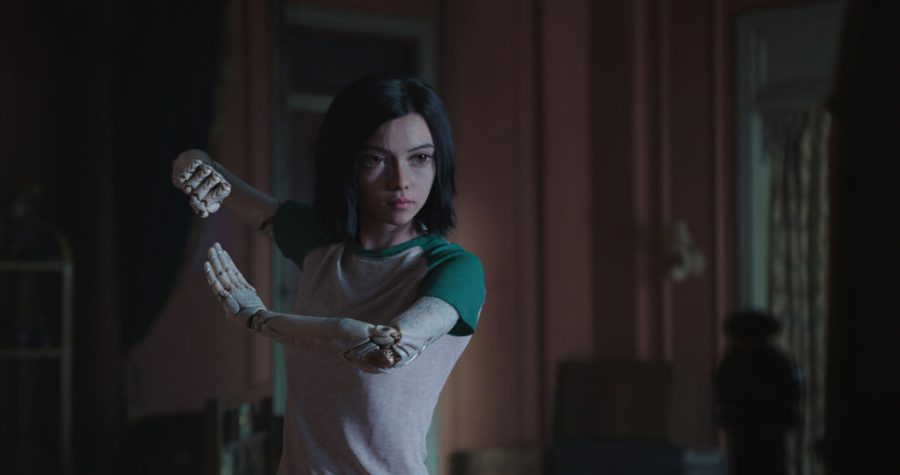REVIEW: Dazzling visuals carry ‘Alita: Battle Angel’ through average script
February 17, 2019
Even though its story beats are puzzlingly familiar, the technological advancements showcased in “Alita: Battle Angel” are enough to produce some of the best action of the last few years and easily carry the film through its muddled screenplay.
Alita (Rosa Salazar) is a cyborg on the brink of death in the year 2563 when her broken body is found in a junkyard by a “cybersurgeon,” Dr. Dyson Ido, played with surprising tenderness by Christoph Waltz.
Ido puts Alita back together again, but she doesn’t remember any of her past, who she is, where she’s from, her purpose in life. She’s not a person, per se, but her journey is undeniably human. She grapples with her own mortality, has existential crises and feels human emotions, mostly love and fear.
FILM FACT BOX
Title: Alita: Battle Angel
Director: Robert Rodriguez
Starring: Rosa Salazar, Christoph Waltz, Mahershala Ali, Keean Johnson, Jennifer Connelly, Ed Skrein, Jackie Earle Haley, Jorge Lendeborg Jr., Lana Condor
Writers: James Cameron, Laeta Kalogridis
Runtime: 122 minutes
The film is adapted by a series of Japanese manga, and therefore, the first half an hour Alita, a completely CGI-created character interacting with a world of “regular” humans, is on screen is unquestionably jarring and borderline disconcerting.
The truth is audiences have never seen a completely CGI character like Alita; this isn’t a Jessica Rabbit situation where we can clearly see she’s a cartoon and can easily be treated as such. Alita doesn’t just dip her toes into the uncanny valley; she lights herself on fire and then does a front flip into it.
But as the movie goes on, the audience can see how plainly necessary Alita’s strangeness is to the plot of the film. She is, for all intents and purposes, an outsider in a world she doesn’t know anything about. We have to see her that way. In a lot of ways, we see her as the humans in the film do, as someone who’s not “one of us.”
She’s also not one of us in the fact that she kicks an unholy amount of ass in fight scenes. In a high-budget blockbuster PG-13 film like “Alita: Battle Angel,” many directors may have been scared off from pushing the limits. Robert Rodriguez, who made his name off ultraviolent movies like “Planet Terror” and “From Dusk Till Dawn,” is not most directors. The movie is PG-13, but, man. It tests those limits then some. There’s got to be something in the MPAA guidelines about how many limbs can be removed before a movie gets bumped up a rating.
The film is written by legendary filmmaker James Cameron, who has a bit of a tendency to go so sci-fi-heavy that the movie loses any interesting human qualities — cough, cough, “Avatar” — but Salazar delivers an absolute knockout performance as Alita. It would be easy for the audience to look into the character’s comically large eyes — seriously, look it up — and feel like they’re looking at a video game character, but Salazar’s genuine curiosity throughout the movie keeps it afloat when she’s not cutting another robot in half.
Keeping on the video game theme, the dialogue in the movie sounds like it’s ripped straight from a bad PlayStation 2 J-RPG. It’s forced and clunky and brings the pacing to a screeching halt, making the movie a significantly tougher watch, even if it all comes around when Alita starts busting heads again.
Strange subplots and hamfisted handling of potentially emotional moments drag the movie down a bit, but overall, it’s still a damn good time and a win for the science fiction community.
GRADE: B+
Cameron Hoover is a film critic. Contact him at [email protected].












